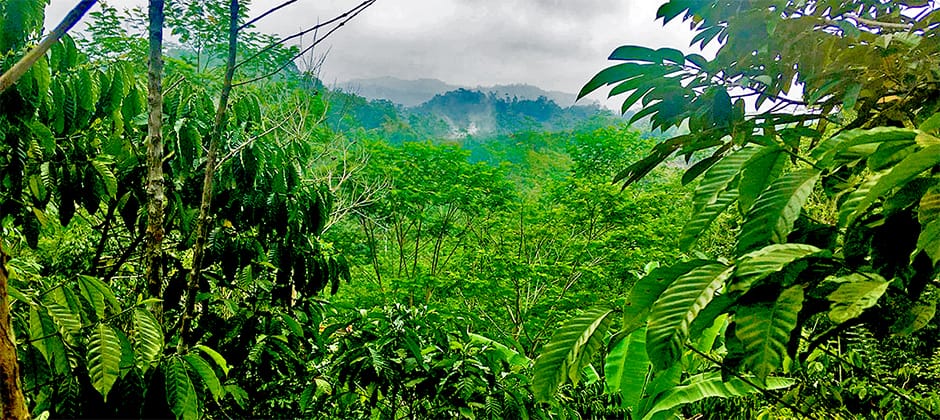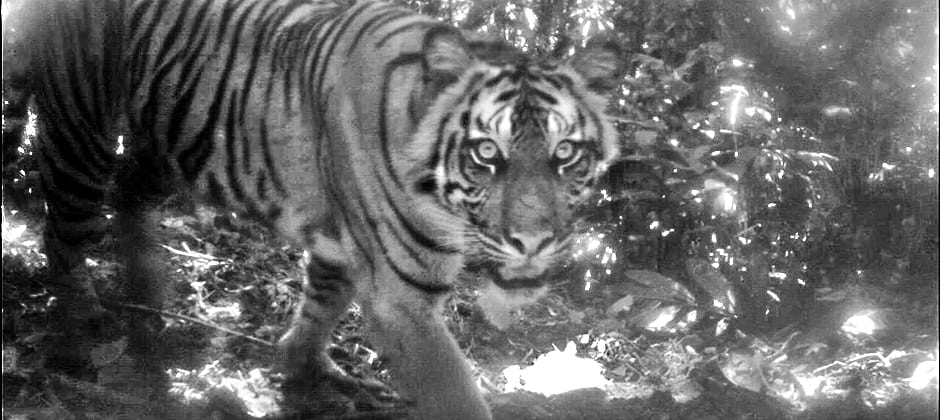Share this article
Camera traps reveal tiger’s footprint on Sumatran ecosystem
Although the Sumatran tiger is critically endangered, its presence in the mountains of southern Sumatra is strong enough to shape the behavior of other predators that share the landscape with it.
“Tigers are a very charismatic species, so everyone wants to conserve them,” said TWS member Max Allen, a wildlife ecologist at the Illinois Natural History Survey at the University of Illinois at Urbana-Champaign. “But when you conserve this big apex carnivore, what effects are they having on the rest of the community?”
Allen is the lead author of a study published in Animal Biodiversity and Conservation based on eight years of ongoing camera trap research covering 50 square miles of Bukit Barisan Selatan National Park, on the southern tip of the Indonesian island.
The cameras captured 39 species, including 28 never seen in previous surveys — the critically endangered Sunda pangolin (Manis javanica), the endangered dhole (Cuon alpinus) and the otter civet (Cynogale bennettii) among them. Eight species noted in past surveys did not turn up, however, including the critically endangered Sumatran rhinoceros (Dicerorhinus sumatrensis), the endangered dark-handed gibbon (Hylobates agilis) and the endangered hairy-nosed otter (Lutra sumatrana).
Some of the most globally endangered species, like Sumatran elephants (Elephas maximus sumatrensis), turned out to be among the most abundant in the park, researchers found. “That’s a finding that I wasn’t expecting,” Allen said.
In this study, he and his team focused on the Sumatran tiger’s (Panthera tigris sumatrae) behavior and its role in shaping other carnivores’ behaviors. Tigers are most active during the day in this part of the park, they found. But during the tigers’ busiest hours, the large carnivores that compete with them for resources become scarce. Sunda clouded leopards (Neofelis diardi), for example, are most active between late evening and late morning, even though the species isn’t strictly nocturnal, avoiding tigers that will attack them on sight.
Small carnivores, on the other hand, showed no such aversion. Marbled cats (Pardofelis marmorata), which are more likely to snatch up rodents that wouldn’t make a meal for a tiger, were active during much of the daylight hours that tigers were.
“The more their prey overlaps, the more likely the tiger is going to view them as a competitor, so the more fear they are likely to exhibit,” Allen said.

Most of Sumatra’s wildlife persist in its national parks, the only wild areas left on the island. ©Max Allen
Camera trap projects are a specialty for Allen. He has used them to document carnivores on Lake Superior’s Apostle Islands, brown bears (Ursus arctos) in Slovenia and species of conservation concern throughout the developing world.
“The real benefit is that you can document things without being present — without influencing animals in any way,” he said. “Sometimes I use camera traps for documenting difficult behaviors to observe, putting them up on an animal’s den, or on a kill site, to record feeding behavior and scavenging behavior — things which are just completely impossible to observe in person.”
One of his next projects is in Way Kambas National Park in southeastern Sumatra. “It’s really isolated from other parks,” Allen said. “We’re trying to figure out how sustainable it is for the Sumatran tiger population there and if there are ways to connect it to other parks.”
Header Image: A Sumatran tiger appears on a camera trap image taken in Bukit Barisan Selatan National Park. ©Max Allen








